The idea of ‘absolute time’ is an illusion. Physics and subjective experience reveal why.
Category: physics – Page 163
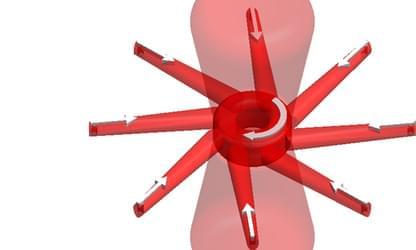
A Lab Plasma Rotates and Produces Jets
A spinning plasma ring mimics the rotating structure surrounding a black hole.
Astrophysicists have many questions about the so-called accretion disk that forms from plasma and other matter falling into a black hole. Now researchers have generated a rotating ring of plasma in an unconfined arrangement in the lab, which will enable more realistic studies of plasma in astrophysical disks [1]. The lab plasma also produced a jet perpendicular to the disk, as real black holes do. The experiment could provide a platform for testing theories describing the evolution of astrophysical disks.
According to observations, the matter in a black hole accretion disk spirals inward at a rate that is thousands of times faster than would be expected from turbulence-free rotation. The leading explanation involves turbulence generated in part by the interaction of magnetic fields with the plasma in the disk, but this theory is difficult to test without a lab plasma that rotates rapidly. Such an experimental system would also allow researchers to investigate accretion disks around massive objects other than black holes.
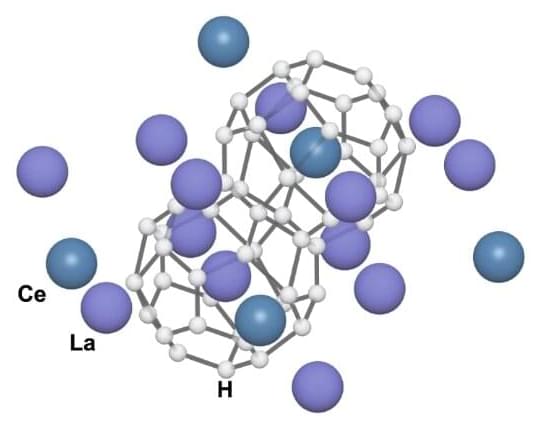
New material facilitates search for room-temperature superconductivity
Scientists from Jilin University, the Center for High Pressure Science and Technology Advanced Research, and Skoltech have synthesized lanthanum-cerium polyhydride, a material that promises to facilitate studies of near-room-temperature superconductivity. It offers a compromise between the polyhydrides of lanthanum and cerium in terms of how much cooling and pressure it requires. This enables easier experiments, which might one day lead scientists to compounds that conduct electricity with zero resistance at ambient conditions—an engineering dream many years in the making. The study was published in Nature Communications.
One of the most intriguing unsolved questions in modern physics is: Can we make a material that conducts electricity with zero resistance (superconducts) at room temperature and atmospheric pressure? Such a superconductor would enable power grids with unprecedented efficiency, ultrafast microchips, and electromagnets so powerful they could levitate trains or control fusion reactors.
In their search, scientists are probing multiple classes of materials, slowly nudging up the temperature they superconduct at and decreasing the pressure they require to remain stable. One such group of materials is polyhydrides—compounds with extremely high hydrogen content. At −23°C, the current champion for high-temperature superconductivity is a lanthanum polyhydride with the formula LaH10. The trade-off: It requires the pressure of 1.5 million atmospheres. At the opposite end of the spectrum, cuprates are a class of materials that superconduct under normal atmospheric pressure but require cooler temperatures —no more than −140°.

Chinese Mars rover sends back images of recent water-shaped crusts
Most of Mars appears to be an endless expanse of alien desert, without a river or lake in sight. However, liquid water definitely existed in the planet’s distant past. A new paper has also suggested that it’s also possible small quantities of water still might exist in places that otherwise appear barren.
Before China’s Zhurong (also known as Phoenix) rover went into hibernation mode last May, researchers from the National Astronomical Observatories and the Institute of Atmospheric Physics of the Chinese Academy of Sciences discovered something unexpected. Zhurong was exploring the Utopia Planitia region, which is near the planet’s equator. No liquid water was thought to exist at those latitudes. Yet when the rover beamed back data from its Multispectral Camera (MSCam), Navigation and Terrain Camera (NaTeCam), and Mars Surface Composition Detector (MarSCoDe), there was possible evidence for liquid water having been present less than half a million years ago.
“[Our findings] suggest [features] associated with the activity of saline water, indicating the existence of water process on the low-latitude region of Mars,” the researchers said in a study recently published in Science Advances.
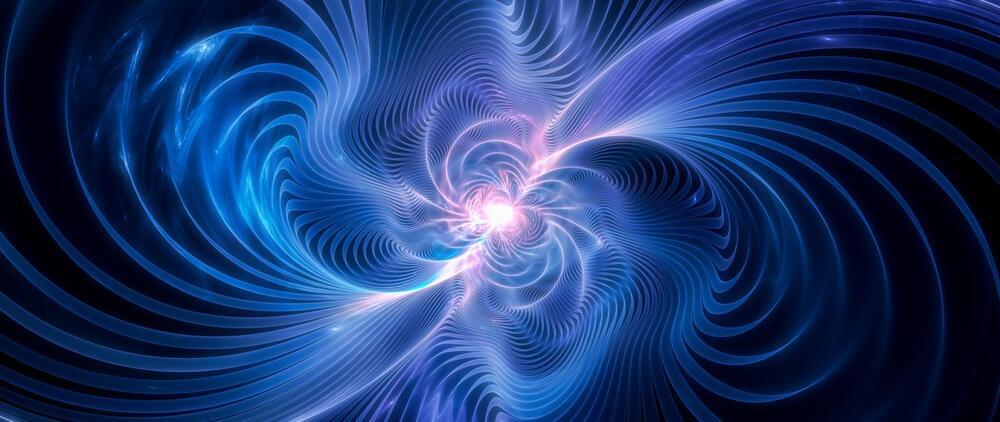
New approach discovers gravitational waves from the universe’s earliest moments
This breakthrough opens doors to investigating the early universe independent of traditional cosmic background radiation studies.
Unveiling the mysteries of the universe’s earliest moments has always been a tantalizing pursuit for scientists and cosmologists. And now, a team of researchers has made a groundbreaking discovery that promises to shed new light on these enigmatic beginnings.
In a study published in Physical Review Letters on May 2, scientists uncovered a new approach to exploring the dynamics of the early universe using gravitational waves.

‘Runaway black hole,’ or sneaky galaxy in disguise? Experts are conflicted
The object’s gravity and velocity, the study suggested, would have ignited the gas and left a blazing trail of stars in its wake. This exciting discovery would mark the first observation of a rogue supermassive black hole — objects that are theorized to roam the universe after being ejected from their host galaxy, possibly due to collisions with other black holes.
Now, new research hints at a more mundane explanation.
The new study, published in the journal Astronomy & Astrophysics (opens in new tab), suggests that the weirdly thin streak might simply be a flat galaxy viewed on its edge, like the rim of a plate. Unlike the Milky Way, this supposed galaxy would not have a bulge of stars at its center but would be totally flat — a relatively common type of galaxy called a thin or flat galaxy.

Yerkes Observatory appoints Director of Astronomy and Research
Yerkes Observatory in Williams Bay, the birthplace of modern astrophysics, announced on May 10 the appointment of Dr. Amy Steele as its new Director of Astronomy and Research.
Coming to Yerkes from the Trottier Space Institute in Montréal, Quebec, Canada, Steele studies the building blocks of planets living around stars like our sun that have reached the final phase of their lives. She will begin her role in June, reporting to Yerkes’ Montgomery Foundation Deputy Director and Head of Science and Education Dr. Amanda Bauer.
“The opportunity to lead the direction of astronomy and research at Yerkes is a dream come true for me as an astronomer,” Steele said. “It is an honor to be able to work alongside an adventurous and passionate team who share the same love for this observatory and communion with the night sky. I am truly excited to collaborate with my colleagues and the Yerkes Future Foundation to inspire astronomers young and old, near and far, to follow their curiosity and chase their dreams.”
Helion aims for commercial fusion by 2028
Helion Energy has announced that Microsoft will become its first customer, in a deal that aims to supply 50 MW of fusion power by 2028.
Assembled electromagnetic coils that will be used in Helion’s 7th fusion prototype, Polaris. (Photo: Business Wire)
Helion Energy is a privately held fusion energy company founded in 2013 by Dr. David Kirtley and Dr. John Slough, both of whom are experts in plasma physics. The company is headquartered in Washington, USA, and is focused on developing a practical, clean, and abundant source of fusion energy.
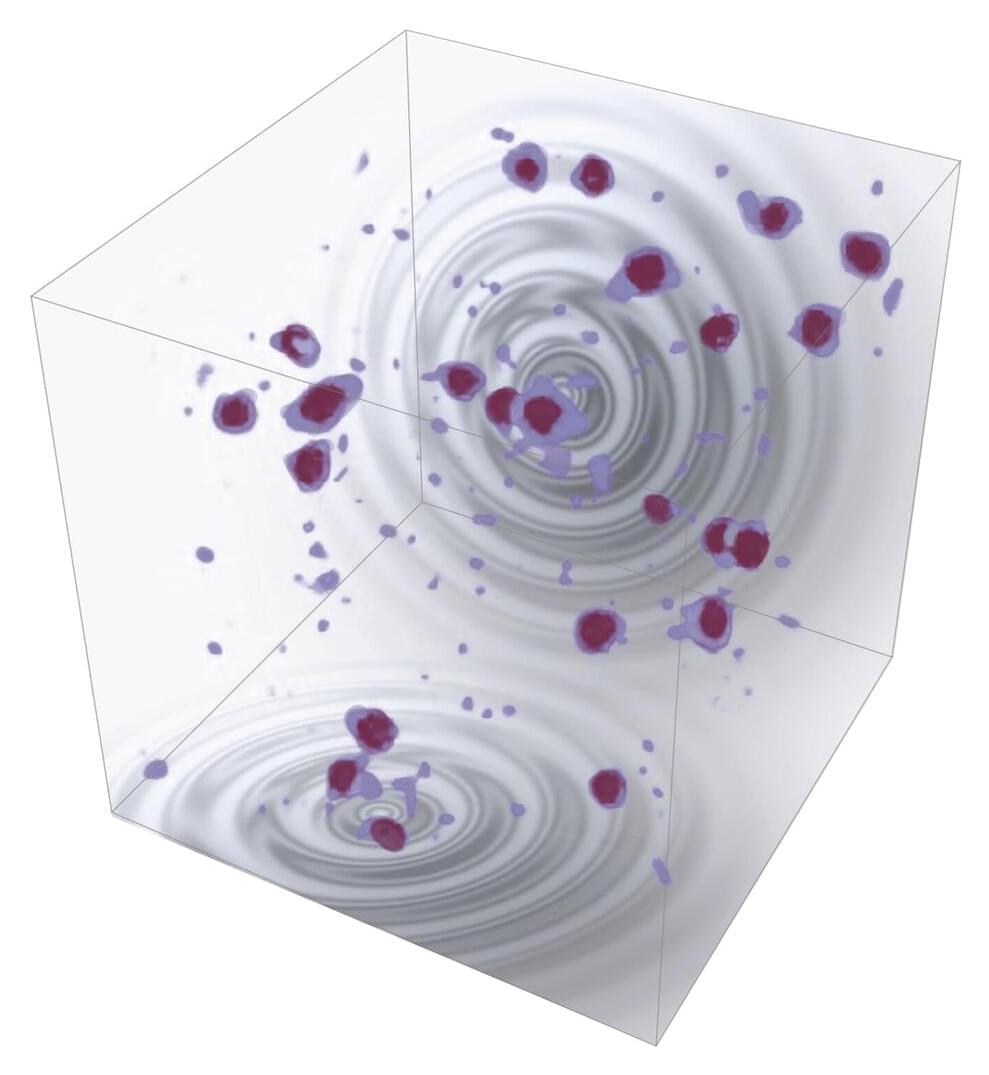
Researchers find new approach to explore earliest universe dynamics with gravitational waves
Researchers have discovered a new generic production mechanism of gravitational waves generated by a phenomenon known as oscillons, which can originate in many cosmological theories from the fragmentation into solitonic “lumps” of the inflaton field that drove the early universe’s rapid expansion, reports a new study published in Physical Review Letters on May 2.
The results have set the stage for revealing exciting novel insights about the universe’s earliest moments.
The inflationary period, which occurred just after the Big Bang, is believed to have caused the universe to expand exponentially. In many cosmological theories, the rapid expansion period is followed by the formation of oscillons.
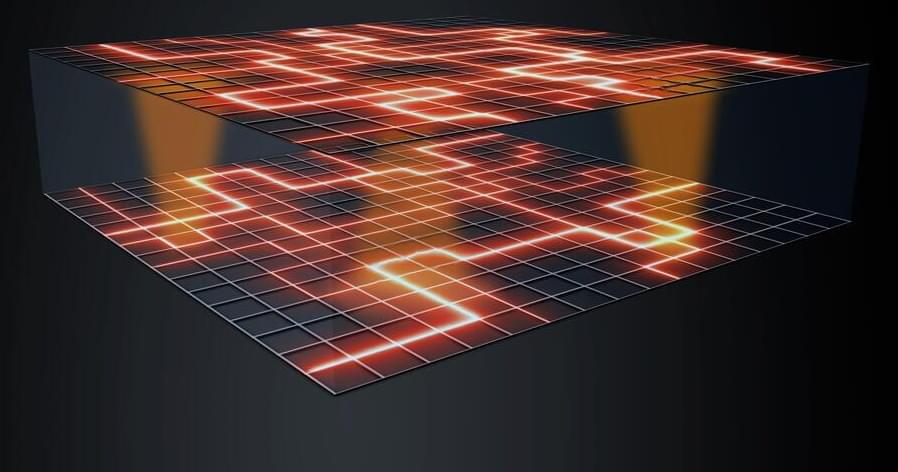
Interdependent superconducting networks
In 2010 Prof. Shlomo Havlin and collaborators published an article in the journal Nature proposing that the abrupt electricity failure causing the famous 2003 Italy blackout was a consequence of the inter-dependency of two networks. According to Havlin’s theory the dependency between the power network and its communication system led to cascading failures and abrupt collapse. Havlin’s seminal work ignited a new field in statistical physics known as “network of networks” or “interdependent networks” and paved the way for understanding and predicting the effects of the interaction between networks.
The main novelty of Havlin’s model is the existence of two types of links that represent two qualitatively different kinds of interactions. Within networks, links between nodes describe connectivity such as electric power or communication connections. Between networks, on the other hand, links describe dependency relationships in which the functionality of a node in one network depends on the functionality of a node in the other. The communication hubs need electricity and the electric power stations depend on communication control. This dependency leads to a cascading effect in which failure of a single node in one of the networks could lead to an abrupt breakdown of both networks.
Over the past decade or so since, Havlin, from the Department of Physics at Bar-Ilan University in Israel, and others have applied this concept to a variety of abstract systems, such as the internet, road traffic, the economy, infrastructure, and more. But being a theorist, Havlin was unable to manifest the hypothesis on real experimental physical systems and thus the theory couldn’t be confirmed in controlled experiments, nor could it be implemented for device-type applications.